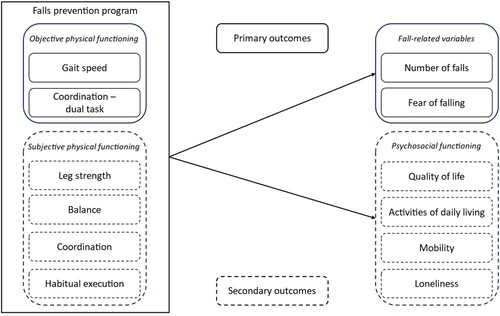Figures & data
Figure 1. Measurement points of the longitudinal study to evaluate the falls prevention program.
Note: BCTs = behavior change techniques, T1 = Time 1, T2 = Time 2.

Figure 2. Framework for quantitative evaluation of outcomes.

Table 1. Bivariate correlations in the longitudinal sample (n = 125).
Table 2. Effects on primary and secondary outcomes over 6 months.
Table 3. Identified behavior change techniques used by instructors across all observed falls prevention groups (n = 22).
Data availability statement
The data cannot be made available as the rights lie with the health insurance company.
